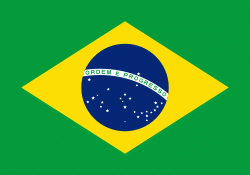Joinville
 |
The city has a very high human development index (0.809) among Brazilian municipalities, occupying the 21st national position. One study pointed to Joinville as the second best city to live in Brazil. Joinville holds the titles of "Brazilian Manchester", "City of Flowers", "City of the Princes", "City of Bicycles" and "City of Dance". It is known for hosting the Joinville Dance Festival (considered the largest dance festival in the world), as well as for having the only branch of the Bolshoi Ballet School outside Russia in the world.
In 2020, the population of Joinville was estimated at 597,658 people, many of whom are of Portuguese, German, Swiss, Norwegian and Italian descent. The metropolitan area is home to 1,340,997 residents according to the 2010 census by IBGE, thus, the most populous metropolitan region of the state of Santa Catarina.
Owing to urban development and relatively good infrastructure, Joinville has become a major center for events and business conferences. The city has one of the highest standards of living in Latin America.
The area surrounding Joinville had been inhabited by the Guarani people for approximately 7,000 years.
Even though it is considered a German-Brazilian city, its origins are French: the area of Joinville was the Colônia Dona Francisca, designated as the dowry to be given to the future husband of Princess Francisca of Brazil, sister of Emperor Pedro II. In 1843, Francisca married François d'Orléans, Prince de Joinville, son of King Louis-Philippe of France, making him the owner of the lands.
In 1851, after the fall of the French monarchy, the French prince negotiated the use of part of his Brazilian lands with German Senator Mathias Schröder, founder of the Colonization Society of Hamburg. This society, made up of bankers, businessmen and merchants, attracted Northern European immigrants to travel to colonize Brazil and establish European communities there. In 1851, the first 118 German and Swiss immigrants arrived in the Brazilian Joinville, followed by 74 Norwegian immigrants. A Royal Palace was built in the city for the prince and princess of Joinville.
From 1851 to 1888, the city of Joinville received 17,000 German immigrants.
Map - Joinville
Map
Country - Brazil
Currency / Language
| ISO | Currency | Symbol | Significant figures |
|---|---|---|---|
| BRL | Brazilian real | R$ | 2 |
| ISO | Language |
|---|---|
| EN | English language |
| FR | French language |
| PT | Portuguese language |
| ES | Spanish language |


















